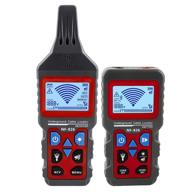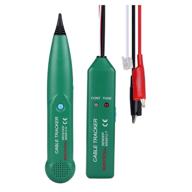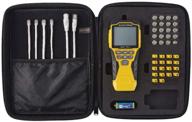
Review on ⚡️ Revolutionize Circuit Testing with Triplett HotWire 3388 Circuit Generator by Jared Coleman

Not suitable for tracing old house wiring.
While this product sounds good on paper, it doesn't really work that well, especially when you're dealing with old household wiring that isn't neatly organized. I was hoping that this tool would help me locate a broken power wire that was causing a part of my house to lose power, but after experimenting with this tool for a bit, those hopes quickly faded. My current house was built in the 1940s. , with cables running through the attic, which is so low that when you opened the hatch you could hardly see anything but the insulation. Unfortunately, the cables that ran throughout the house were simply thrown into the attic and fished out in the right place in the house. As a result, many cables are stacked on top of each other and not properly fastened in the right place (such as a common neutral). Because this product uses radio frequencies to determine the physical location of the cord, it is very prone to bleeding. to other things that are grounded. If I tried to connect both pins then all the wires and outlets in the house would start alarming even though the sensitivity and transmit levels were set on both the transmitter and receiver. On the other hand, just connecting the red pin to a hot slot gives better results (only the circuit itself signals), although there are still many problems with this approach: 1. Ground is still missing - although the instructions try to explaining this I personally believe this was poorly explained and the package doesn't give you anything to create this ground. Grounding is necessary to ensure that enough current can be generated on the line for the resulting signals to be amplified. However, a neutral or ground wire cannot be used for this connection as signals will also be induced on these wires, resulting in an alarm throughout the wire, even if there is an open circuit on the hottest wire. The correct way to create this ground is to take a long extension and attach the end of the extension to some sort of grounding rod (not included in this kit). Without a ground, signals don't travel very far and decay quickly with distance.2. The amp (dog) is an analog device - this was the biggest issue I had with this device. Like a radio, converting the signal into sound, the Beagle does just that (although it has a built-in filter to filter out 60Hz line noise). This means that in addition to the signal you are looking for, you will also hear a lot of other interference that is not at 60 Hz (e.g. AM radio stations nearby). In fact, with the sensitivity level turned on, you can use the Beagle to listen to one of your local AM radio stations (although you can't choose which one). Since there is no digital processing of the received signals, it is up to the user (i.e. you) to determine what is signal and what is noise. The manual mentions a "zero" to look for when looking for a cable, but that zero also sounds very close to the interference you're trying to eliminate. Also, if the grounding isn't done properly, it's very difficult to set the appropriate sensitivity levels, since the signals don't travel very far (e.g. increase the sensitivity and start hearing noise, or decrease the sensitivity and hear nothing? ). The visual display on the hound was almost useless as it is just a visual indication of the input signal being received and amplified by the hound and not the actual signal coming from the transmitter. When you start listening to AM radio from your dog, the visual indicator light will flash to show the radio host is speaking on that AM channel. Distinguishing the loudness of the "signal" is also an issue and can become quite frustrating when playing this instrument (e.g. was it louder at this point, or maybe at this point, or do they sound the same? Sound in certain circumstances them all easy ) . like loud beeps.) 3. Penetration into other wires is still an issue - once you connect the black pin to a common ground, any nearby wires sharing the same "ground" will cause signal leakage. In my case, this defeats the purpose I got this tool for, as overlapping wires that aren't even on the same circuit will set off an alarm, making it impossible to locate the break. While the signals carried on other cables are generally lower, the question sometimes arises as to whether the original signal has degraded simply because of distance, or whether you are actually looking at a different cable. Also, TrueTrace won't do anything in this case since it requires a healthy pair of wires. I recently bought a NOYAFA NF-826 for around $100 and was surprised at how well it compares to the triplet 3388. First of all: 1. The device does not use 9V alkaline batteries, it can be charged by USB port.2 . The device is fully digital and displays the intensity of the received signal as a numeric value that can be adjusted up or down.3. It uses digital processing to determine what is a signal and what is noise. For example, if you set your transmitter to use Code A, the receiver must be able to decode the signal as Code A before emitting intensity tones. The receiver also automatically decodes the correct signal codes without manual intervention or configuration. As a result, you don't have to listen to interference or AM radio noise or interpret what you're trying to find.4. Compared to the triplet 3388, which only has a "voltage detected" LED indicator, the NF-826 gives you a numerical value when used on a live network, similar to a multimeter (e.g. 120V). 5. NF-826 also has NCV function which is very sensitive and you can use it to distinguish between neutral and live wires and see if the wire is "hot" (with intensity indicator on the screen).6. The NF-826's digital processing and numeric mapping helps route circuits even when two pins are connected to the outlet (i.e. when neutral is used as ground). Because of this, I can easily distinguish the circuits in the house, as different circuits usually give very low or zero numeric readings.7. The NF-826 comes with a ground rod that can be driven into lawn or grass and used as a ground source. Triplet has no such accessory.8. The NF-826 supports standard detachable banana plugs, which you can use with your own sensors, if Triplett has non-detachable cables, you may need an adapter for this feature.9. The NF-826 supports up to 400VAC, while the triplet can only handle up to 250VAC (probably not a problem as most AC outlets don't exceed 240V, even internationally). I'm just trying to use it to detect wires that aren't close to other common ground wires. That being said, Tripplett isn't a cheap device, and at this price point you can probably get the NF-826 (or Mastech MS6818) at a similar or lower price, which offers a much richer feature set. If you're looking for something to find an open wire, I think the NF-826 or MS6818 would probably do a better job than the triplet.
- Good product for the price
- weak
New products
Comments (0)
Top products in 💡 Network & Cable Testers
Another interesting products
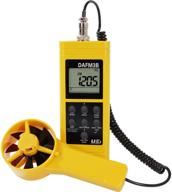
🔧 UEi Test Instruments DAFM3B Digital Multimeter

6 Review
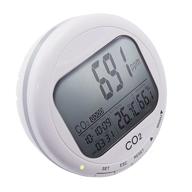
🌡️ Continuous Temperature Monitoring with Relative Humidity Integration

4 Review
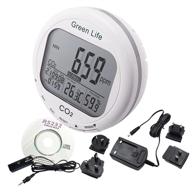
🌬️ Advanced 3-in-1 Indoor Air Quality Monitor with CO2/RH/Temp Data Logging and Audible Alarm - NDIR Sensor Technology

8 Review

🔍 Enhanced Precision with Backlit Professional Manometer for Differential Ventilation

6 Review


